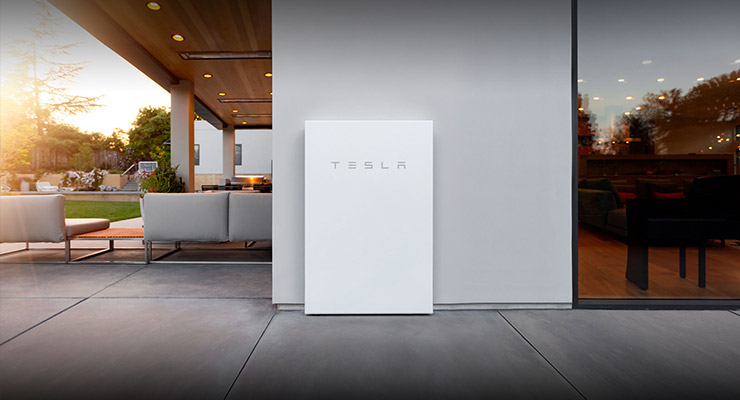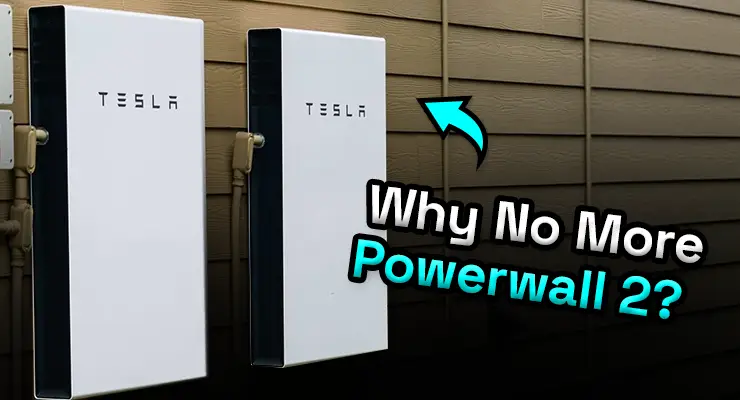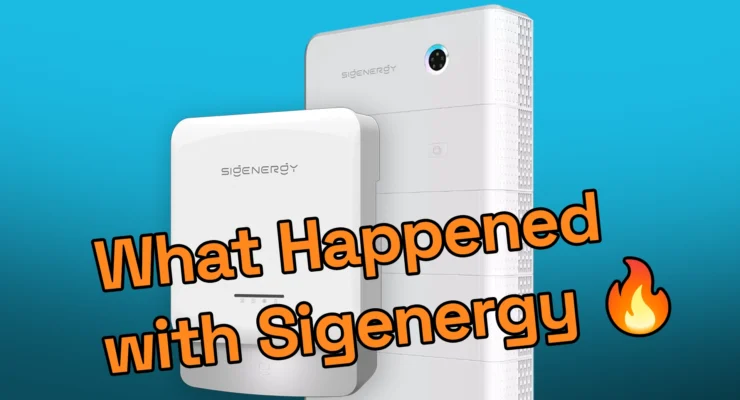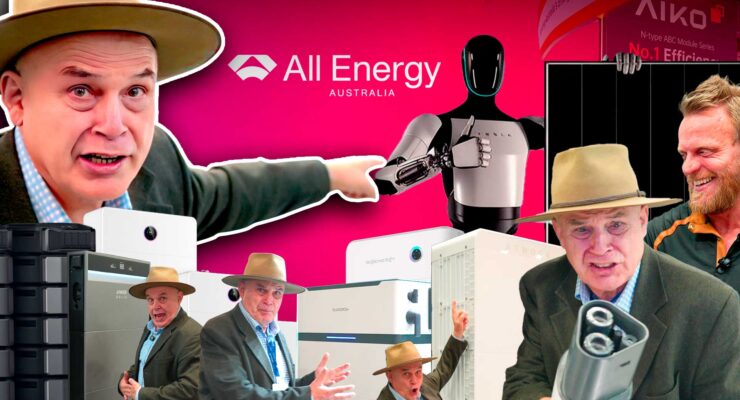Fast read
Tesla has not issued a formal “discontinued” notice for the Powerwall 2 in Australia, yet production is winding down as the newer Powerwall 3 gains traction. The third-generation unit folds a solar inverter into the battery enclosure, delivers up to 11.04 kW continuous power (often rounded to 11 kW and sometimes limited to 10 kW by local DNSPs), and uses long-life lithium-iron-phosphate (LFP) cells. Its official round-trip efficiency is 89 %, while its “solar-to-home” efficiency is 97.5 %.
The Powerwall 2 remains a proven, AC-coupled retrofit option—ideal if you can still source stock for an existing solar array—but inventories are shrinking, and it cannot operate alongside a Powerwall 3. If you already own a Powerwall 2 and want more storage, act soon.
Why Did Tesla Discontinue the Powerwall 2? Here’s the Real Reason
Australian households adopted the Powerwall 2 faster than almost any other market. For years, the 13.5 kWh unit reliably partnered with rooftop solar from Broome to Ballarat, setting a benchmark for home batteries. Understandably, many owners now wonder why Tesla is phasing out a product they still consider state-of-the-art.
The answer is simple progress. As with smartphones, battery models follow rapid upgrade cycles. The Powerwall 3, publicly previewed at All-Energy Melbourne in late 2023 and first installed locally around September 2024, embodies Tesla’s next leap. Let’s unpack what’s changing, why it matters, and how 2025 incentives and standards influence your decision.
A routine refresh, not an abrupt shutdown
Tesla has made no public “last call”, yet several installers say their final Powerwall 2 purchase windows closed by late 2024. In the background, Gigafactories have re-tooled for LFP cells and integrated inverters, the hallmarks of the Powerwall 3. From a homeowner’s point of view, the shift simply reflects demand for higher power, fewer boxes, and improved cell chemistry—features the latest unit delivers off the shelf.
How Powerwall 3 raises the bar
Both generations store 13.5 kWh, but five differences explain Tesla’s pivot. First, the Powerwall 3’s 11.04 kW continuous output more than doubles the 5 kW of the Powerwall 2, letting you boil the kettle, run the induction cooktop, and keep the air-con humming during a blackout. Second, the built-in solar inverter removes the need for a separate string or hybrid unit, trimming hardware costs and smoothing DNSP paperwork on new builds. Third, LFP chemistry lengthens cycle life, improves thermal stability in Australian summers, and removes cobalt from the supply chain.
Fourth, the efficiency numbers now appear in two flavours: Tesla lists 89% round-trip (solar → battery → home) and 97.5% solar-to-home. By comparison, the Powerwall 2’s round-trip sits around 90 %. Finally, installers enjoy streamlined compliance because a single enclosure and fewer DC runs make it easier to satisfy AS/NZS 5139 safety rules, regardless of chemistry.
The broader market is moving the same way. Sigenergy’s modular SigenStor, for instance, also marries LFP modules with an onboard inverter and AI energy management, showing where integrated storage is headed.
Where the Powerwall 2 still shines
If you already have solar on the roof, an AC-coupled Powerwall 2 can still be the sweet spot. It plugs straight into most existing inverters without DC rewiring, keeps solar and battery circuits
separate under AS/NZS 5033, and carries a 10-year Tesla warranty. The challenge is supply: wholesalers report dwindling pallets, and warranty swaps now rely on refurbished units. If your installer locates stock at a fair price, it may be worth snapping up—just check it still qualifies for state-based battery rebates or the forthcoming Cheaper Home Batteries Program starting 1 July 2025.
Mixing generations isn’t an option
Powerwall 2 and Powerwall 3 cannot share the same system. The older model is AC-coupled behind its own 5 kW inverter, whereas the newcomer’s battery and solar strings sit on a shared DC bus. Their firmware and control logic differ, and Tesla’s Gateway refuses to parallel them. Installation manuals warn that combining the two breaches warranty terms and risks non-compliance. Owners wanting extra capacity must therefore source another Powerwall 2—or choose a compatible third-party AC battery—before stocks vanish.

Australian incentives in 2025
Generous rebates and low-interest loans still improve the payback maths:
- Cheaper Home Batteries Program—delivers roughly 30 % off via Small-scale Technology Certificates (STCs) on systems from 5 kWh up to 100 kWh, although certificates are issued only on the first 50 kWh of usable capacity, and grid-connected batteries must be VPP-ready.
- Western Australia—a $130 / kWh state top-up (about $1,300 for a 10 kWh pack) stacks on the federal discount, with zero-interest loans up to $ 10k.
- New South Wales—the Peak Demand Reduction Scheme and several VPP offers shave around $2,400 off a typical 10 kWh installation as of May 2025; however, it will not be stackable with the new Federal Battery Rebate.
- ACT—the Sustainable Household Scheme offers interest-free loans between $2,000 and $15,000 for batteries and other efficiency upgrades.
- Victoria—Solar Victoria continues to announce periodic battery rebates and loans; check the latest round before signing.
From July 2025, STCs no longer apply solely to solar panels; they underpin the national battery program as well. Eligibility hinges on an SAA-accredited installer (the successor to CEC accreditation) and equipment listed on the Clean Energy Council’s approved product registers.
Future-proofing your home energy
Choosing between outgoing and incoming models isn’t just about specs. For new builds or major upgrades, the one-box Powerwall 3 usually lands cheaper installed and faces fewer approval hurdles. Retro-fitting onto older PV arrays may still favour a Powerwall 2 because it leaves your existing inverter untouched. Meanwhile, DNSPs in SA and QLD are trialling midday-export incentives; the faster charge rate of the Powerwall 3 can capture more of that value. At end-of-life,
Tesla reports recovering over 90 % of valuable metals through recycling partners, and LFP further reduces disposal hazards.
Conclusion
Tesla hasn’t “killed” the Powerwall 2; it has simply ushered in its natural successor. The Powerwall 3’s integrated inverter, higher power output, and durable LFP chemistry align with where home storage—and Australian grid needs—are heading. If you’re planning a new solar-battery combo, the third generation is the logical pick. For households with a reliable PV array already on the roof, the Powerwall 2 remains a compatible, warranty-backed option—but supply is fading fast, and any expansion plans should move quickly.
Whatever your situation, confirm incentives, insist on an SAA-accredited installer, and verify your design meets AS/NZS 5139 safety standards. Need expert help interpreting quotes or rebates? Your Energy Answers can connect you with vetted local professionals who will tailor a solution—Tesla or otherwise—to your budget, roof, and energy habits.



